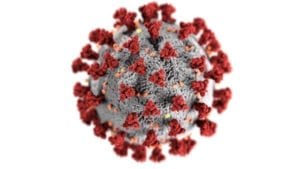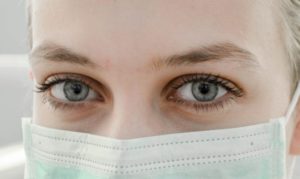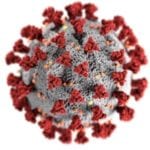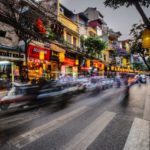The world has now spent more than a year in various states of lockdown. Thankfully, we are starting to see indicators that suggest that some parts of the world are starting to open up. A significant portion (20 percent) of the countries featured in Mastercard’s latest Recovery Insights report are booking domestic travel at a rate that is 90 percent of what it was before the pandemic, and people are spending more money on gas, boats, and bikes (up 13, 30, and 62 percent, respectively) as they search for ways to get outside the house.

However, COVID-19 is far from eradicated. Public health will continue to be a major concern for every industry moving forward, and people will still need to take certain precautions to make sure that everyone remains safe once we are able to see our friends and family in person.
Biometric technologies can be an integral piece of the puzzle to make those reunions possible. With that in mind, here are three ways in which biometric solutions will help people reconnect with one another in the wake of the pandemic.
1. Vaccine Passports
To put it bluntly, the recent re-openings would not be possible without COVID-19 vaccines. The disease cannot spread as easily amongst those who have been inoculated. Venues can safely open their doors to greater numbers of people – as long as they can ensure that everyone present has completed their full vaccination schedule.
In the past, venue operators might have asked to see a paper vaccine passport. The problem is that such documents can be forged, and there is no way to guarantee that the document being presented actually belongs to the person holding it. Biometrics, on the other hand, give people a way to link their identity to their vaccination record and their COVID-19 test results. In doing so, they provide a higher level of assurance than a simple piece of paper.
Those vaccine passports can also be delivered through an app, which makes it easy to verify their authenticity. The holder can store their passport on their smartphone and unlock it with a biometric scan, and the venue can use a separate device to confirm that it is legitimate.
2. Biometric Screening
Everything we touch is a potential vector of disease. That’s especially true in high-traffic areas like airports, where thousands of people may interact with a single machine on a daily basis.

Contactless biometric technologies like facial recognition help reduce the amount of physical contact between travelers, airport staff, and airport infrastructure. People can bind their biometrics to their travel information in the same way that they can with a vaccine passport, giving airports a safer way to verify people’s identities at check-in, security, and boarding gates.
Recent technology improvements have yielded additional benefits in that regard. Many facial recognition systems can now identify people who are wearing masks, which means that people do not need to remove their protective equipment (and risk exposure) to take advantage of the contactless boarding experience. That will make people more confident when getting on a plane, and encourage more people to see one another face-to-face.
“The past year has only reinforced how important travel is — to our connection with friends, family and the broader world, to our business communities, and to our personal fulfillment,” said Mastercard Data and Services President Raj Seshadri. “The economic implications of tourism are vast, with virtually no industry untouched when travelers stay home.
3. Contactless Payments
The pandemic fundamentally transformed the way that people pay for goods and services. Mastercard recorded a $900 billion jump in online spending in its previous Recovery Insights report, while others have observed that consumers are increasingly afraid to make contact with shared payment terminals due to concerns about COVID-19 hygiene.
Contactless cards and payment apps help restore people’s level of comfort when buying things in person. Biometric technologies simply add an extra layer of security and convenience, insofar as biometric authentication enables higher payment caps and allows people to make larger purchases with a tap. As a result, biometrics will essentially grease the wheels of the economy. Mastercard’s numbers show that those who were fortunate enough to save up money in the past year are looking to indulge now that there is somewhere to go, and biometrics will minimize friction and make it easier to pay for the gas that we need to get there.
—
Interestingly, Mastercard has also found that people are spending more on beauty products, which further demonstrates how recovery goes beyond travel alone. We want to look our best when we do get the chance to see our friends, and biometrics can help give us more peace of mind as we relearn how to navigate our public lives!
–
July 8, 2021 – by Eric Weiss








Follow Us